

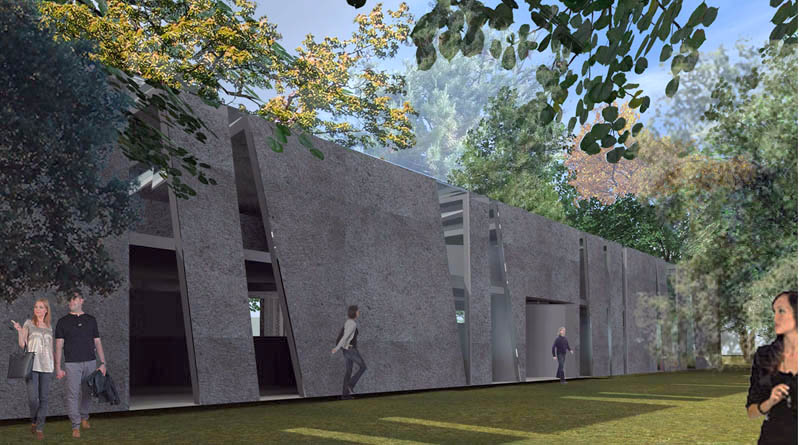

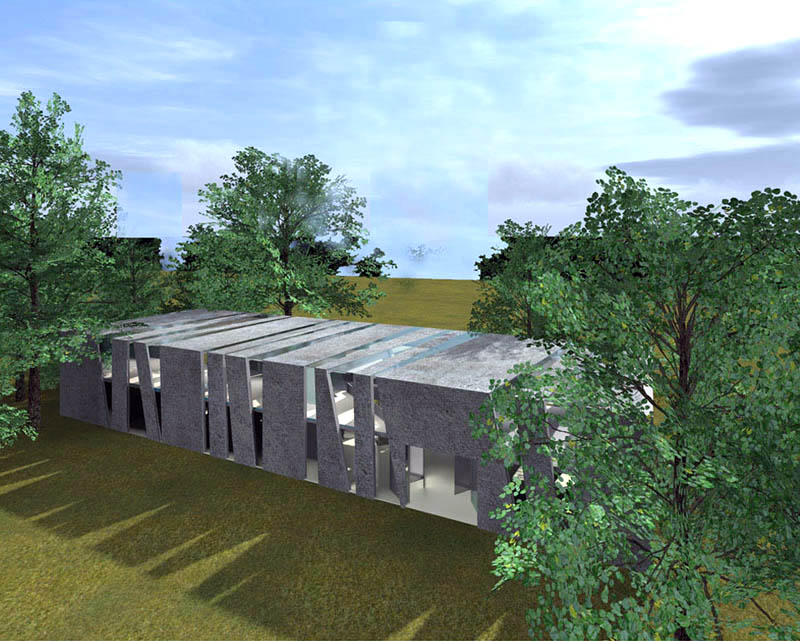



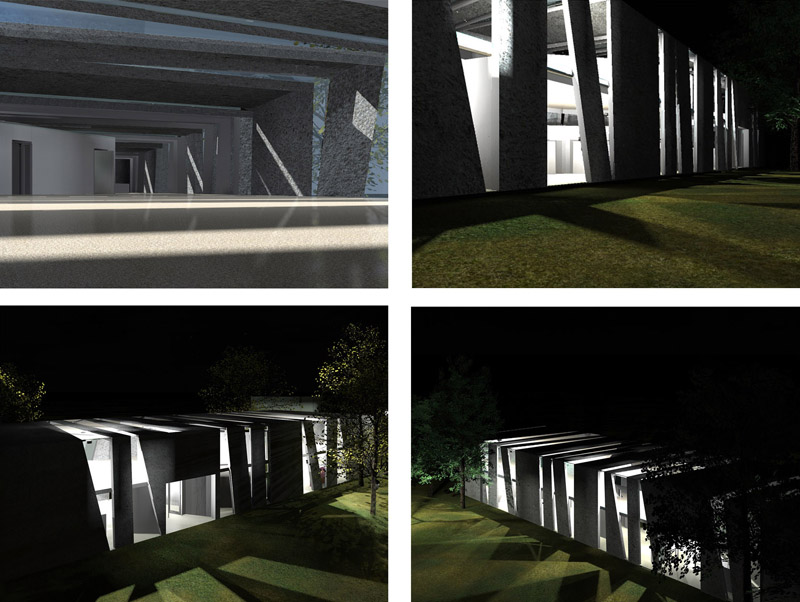



This thesis wanders around a meeting point. The point where Larnaca Salt Lake meets the Leper House “Agios Charalambos”. It is not just a spatial meeting, because when history comes along, this meeting finds a purpose and a cause. The ecological and archaeological significance are together with the area, currently left to degrade and this became the reason for the regeneration of the area. Two spaces, coexisting by incidence, are renewed and transformed into one vital area of the city.
A new memorial space is being created, a museum for the people who spent their lives in the leper house. Through wandering in the building, the visitor has sporadic views of the sensitive natural environment and can relate the information given with the setting. In this memorial, the guest discovers tracks of human life, activity and civilization. When exiting the building, the visitor follows a three dimensional walk above and around the Salt Lake scenery. This walk aims to connect the two spaces through continuous images, views and information. The structure created, includes the trail, recreational spaces, view and information points.
Supervisor: Trova Vasso
Reference Number: 522
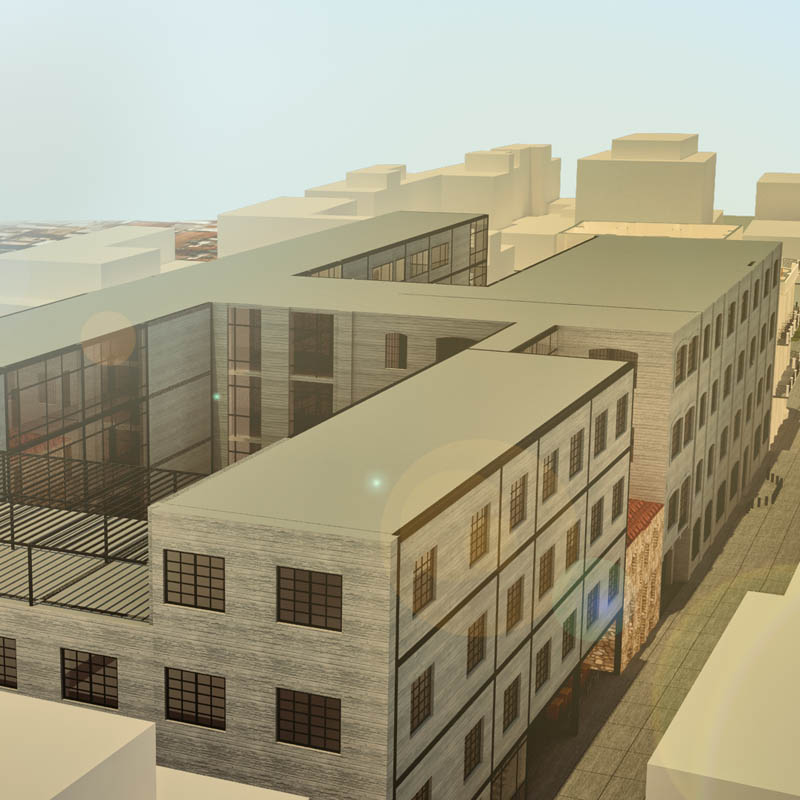

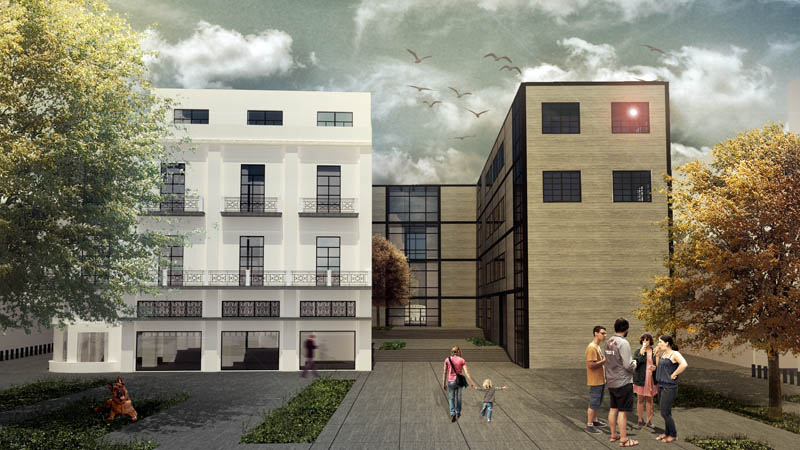

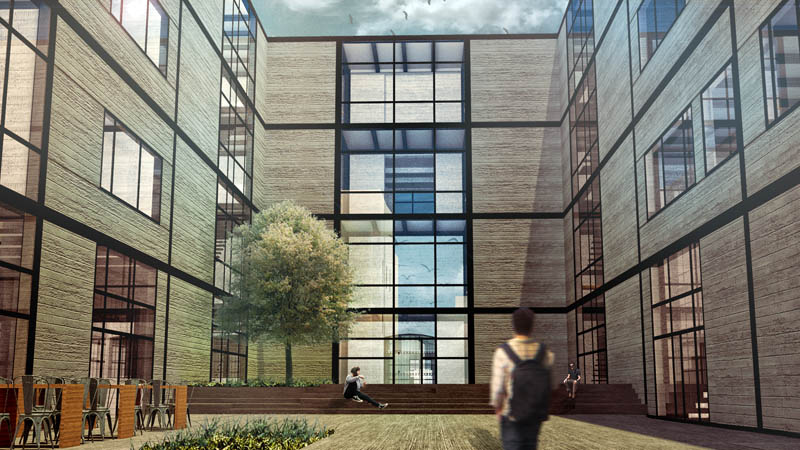

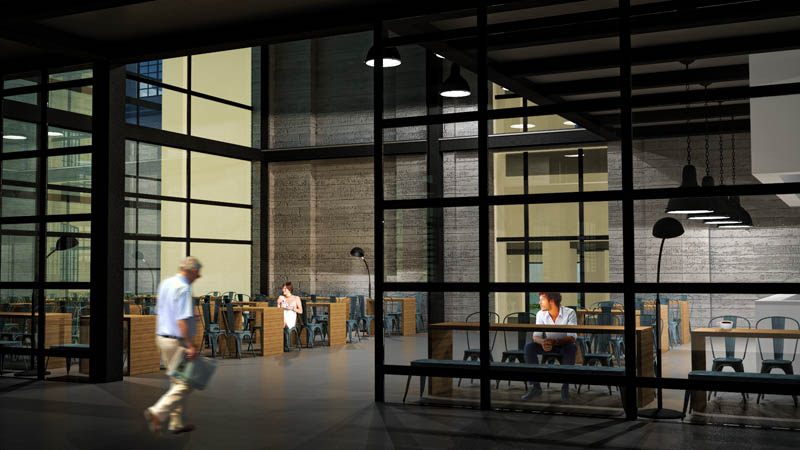

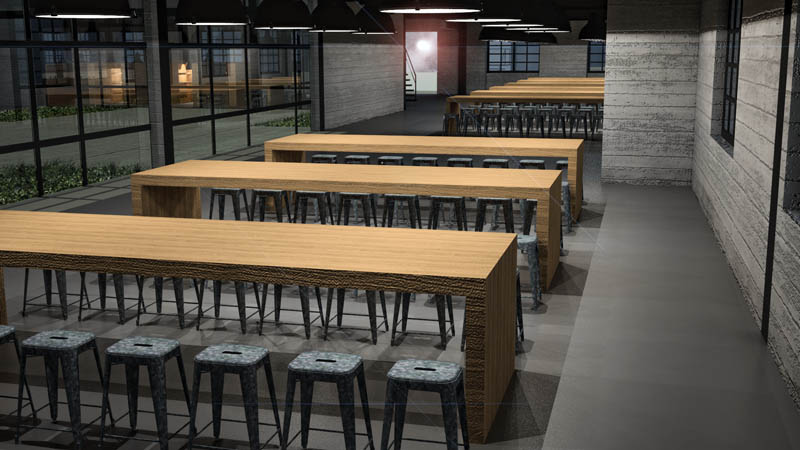

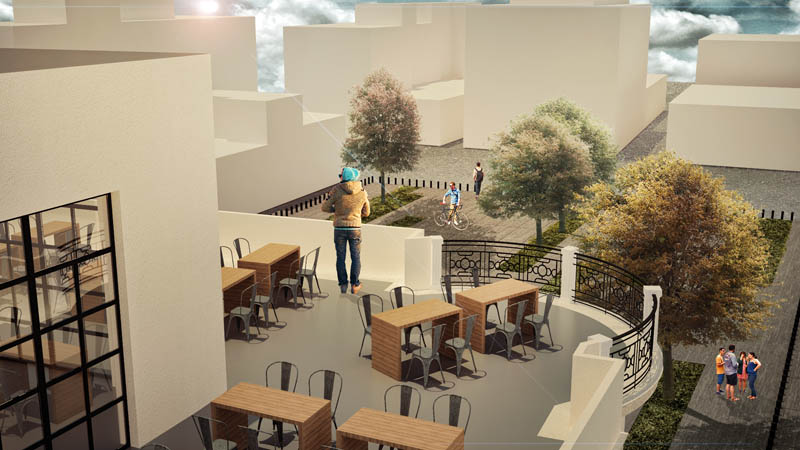

Part of the research theme was the examination of the interactive relationship between the city and the institution of the university. The coexistence of these two was analyzed, both in urban and in social and conceptual level. Also, the basic spatial and functional classification of the campus according to its urban context was detected. The main categories of a campus are the inner city campus, the Greenfield campus, the High Tech campus and other hybrid models which are results of the spatial and functional combination of the above.
The inner city campus, which is the most common spatial model, presents several subcategories, depending on the location and the level of ‘transparency’ of the city’s operation. In this way, the ‘diffuse’ urban campuses are identified, where the individual academic facilities are sited in different parts of the urban environment and those in which the different parts compose a single complex. Regarding to the functional ‘transparency’ the type of monastery campuses exist, providing the academic community with all the necessary urban functions within the territorial limits of the university. There are also the partially autonomous campuses, where the provided facilities do not cleave the users from the functions of the urban framework, and those where the presence of urban functions within their spatial limits are zero.
The choice of the location of a campus, beyond its functional nature, depends on the available buildings and spatial stock, the transport network to facilitate the access to and from the different parts of the city and the collaboration with other academic departments.
Study area of this project is the city of Volos, in which the spatial model of the ‘diffuse’ urban campus is detected, as the individual academic infrastructure is located between the city limits and its centre. The choice of the location, where the new campus will be created, the industrial building of the tobacco industry Matsagos, was based on the existing urban facilities located in this vicinity, on the easy access with the means of transport near the area, as well as on its central position in relation to the other higher education institution of the University of Thessaly.
Purpose of this project was the creation of a hybrid model, which can be part of the existing ‘diffuse’ campus, providing, though, facilities and green spaces, useable both by the academic and the local community, to such extend that the contribution of the city, through its provisions, remains important.
The incorporation of the city in the spatial context of the university and the opposite becomes apparent through the forming of the ground floor level. Both the uses taking place there and the management of the open space enhance the bidirectional interactive relationship between these two institutions.
Part of this project was also a proposal for the University Square, a pedestrianization of the Sokratous arcade and its side roads, in order to yield a single architectural language in all the individual elements of the city and the university. The city enters the university area by expanding the public square into the university complex taking the form of inner courtyards (a characteristic of the medieval campus), which gradually become more and more private. This action shatters the strict boundaries of public and private uses and crossing areas between those are being created.
The style of the preserved facades of this building is maintained and enhanced, creating a rigorous shell in its external facades, while the interior follows an opposite strategy in order the functional transparency to be morphologically attributed.
Supervisor: Antonas Aristide
Reference Number: 524


We are creating a scenario with which we can make a statement in architectural terms. Using the shape of legal documents and constitutions regarding space, we form contradictions that could never exist in these documents.
Everything that consists this that we call pathologies in Athents, we shall not cure with a medi-political gesture, a proposal of healthy law. We consider these patholgies as theories and actions that are depending on the same mechanism that creates them.
Through a common ground we note the the antagonisms and conflicts that produce space. Organized relations cannot be produced elsewhere, only where there is a decision required. This is the common ground, a ground that is not proposed as the correct one that can solve any problem but one that can host meetings of people or communities consisting a new balance.
University on the other hand, is the institution that, at least in Greece, can interfear in sensitive apsects of life. To be clear, university has the social legitimation in some areas that state rules exclysively, such as health and education.
In marginal times regarding the relation between state and university this autonomy is disputed. In our scenario, The Experimental Urban Planning is trying to interfear with exactly these relations and contradictions.
We choose the physical space of the university as a scene so the phantasy of our scenario can form. We question the fact that the term university is almost identical with its campus. This is a global phenomenon with political extensions regarding the zoning of cities.
All in all, the scenery is both local and global (glocal). University is referred to Athens, Greece and the world in general. It is about specific ways of building and local pathologies, elations of the university and the state, symbolic zones, branding and global knowledge concerning - also - global planning.
Supervisor: Kotionis Zissis
Reference Number: 519




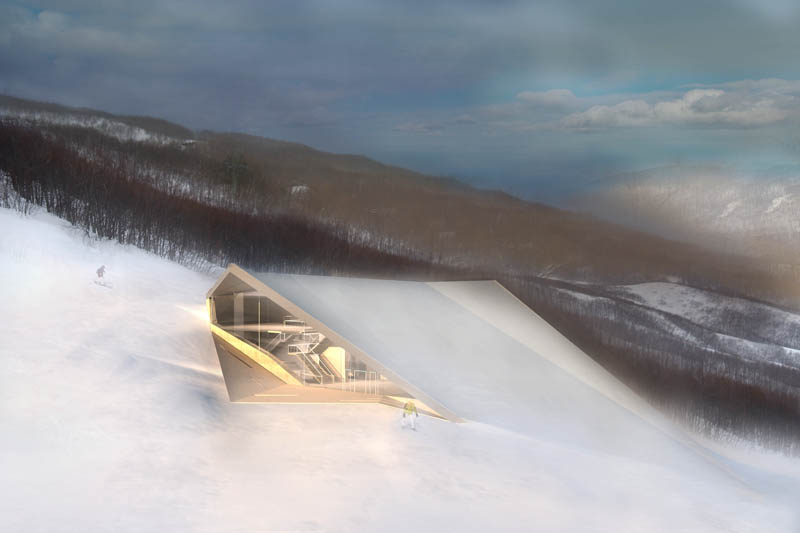

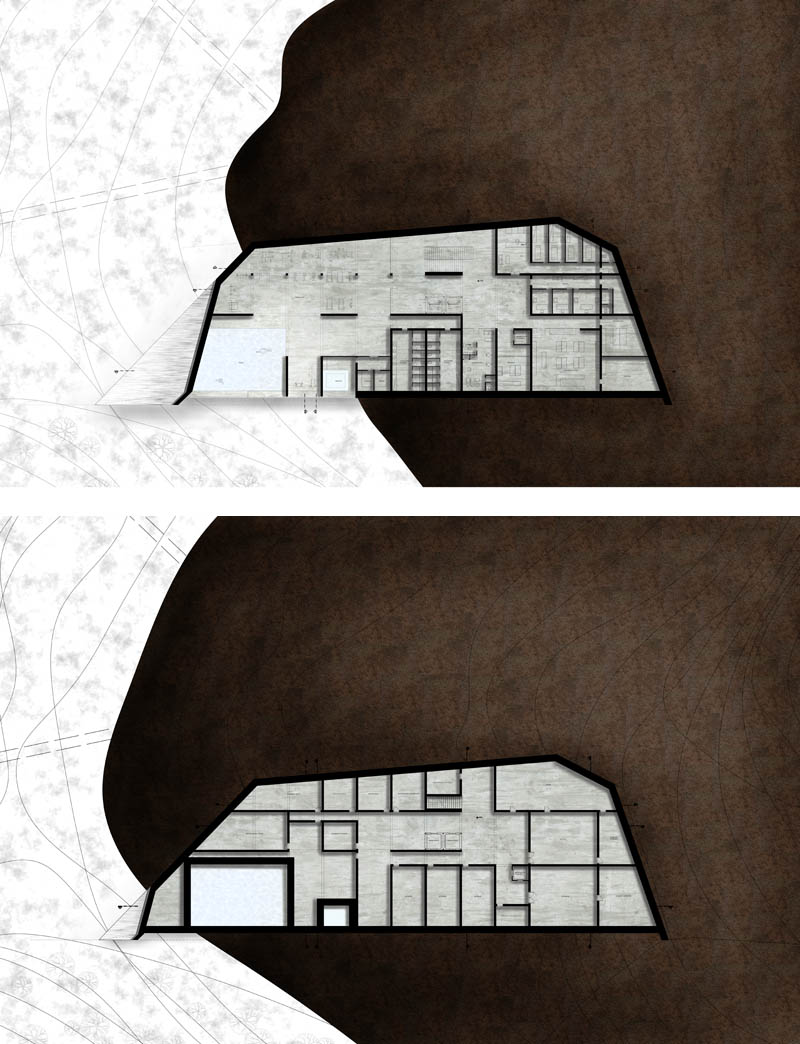

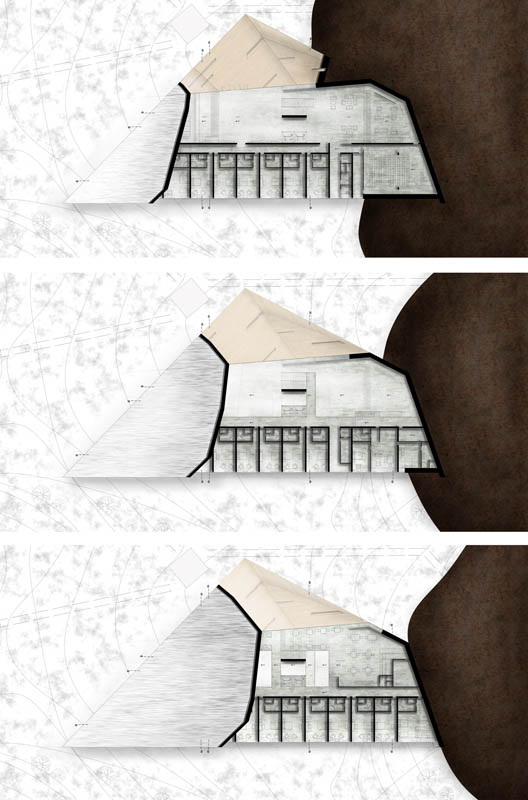

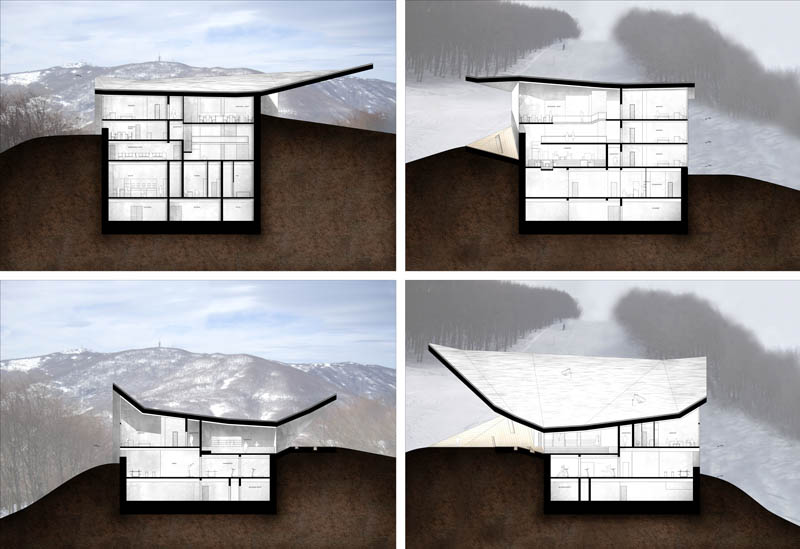

The present thesis’s subject deals with the design of a hotel in the ski center “Agriolefkes” of Pelion, which will be built on the slope of the mountain and its roof will be a ski slope at the same time. In particular, the project’s goal is to integrate the hotel, of which the roof constitutes part of the slope, to the landscape but also do some interventions that will lead to a general reformation of the ski center. This dual nature of the building aims to create a hotel that will be in harmony with the natural landscape and also attract tourism.
The reason why i chose this subject is on the one hand the specificity of the location, the rare beauty and diversity of the landscape in relation to the other ski centers of Greece and the fact that Pelion is a major tourist destination and on the other hand my personal experience in this ski center.
Having studied the area and noticed the problems and potentials that exist, the project attempts to take advantage of the benefits of the location and the view over the Pagasitikos Bay, the city of Volos and the Aegean Sea to the use of the hotel throughout the year and not just during the winter months that are indicated for skiing.
Supervisor: Triantafillidis Giorgos
Reference Number: 482


Artificial lake Kerkini islocated in the northwestern part of Serres county, at a distance 40 km from the city of Serres.RiverStrymonisthe main feeder of the lake. The significance of lake Kerkini has multiple roles, such as, holding the waters of Strymon preventing from floods, is the main source of water irrigation for the local farmers and buffalo breeders and fishing, since it’s the richest lake in Greece in freshwater fish. All the above contribute in the local economy and the surrounding villages. Due to the great variety of flora and fauna that takes place there, as well that the lake is a wintering place for many species of birds, which many of those species are endangered or their population is limited. The lake is also a place of recreation, by offering to the visitors a variety of activities, as well constitutes a source of knowledge and research for scientists and researchers.
The target project was the creation of shelters and watching towels, as well tour ways around the lake, aiming in environmental education, through organized daily or short-termed trips for school and college students, scientific studies for scientists and researchers, and mild leisure throw nature watching for the vacationers. Fishermen could use as well the shelters to make easier their transportationthrough different destinations. Subsequently 3 different sites were chosen to accommodate the constructions: forest-cluster sites of poplar trees, the southwestern changeable coast which is flooded with lake water in summer, while in the winter the water draws back revealing the bottom of the lake, and the west embankment close to the village Kerkini. Emphasizing the concept of shelter and observation and driven morphological properties of the selected points, the main goal was to highlight the landscape of the lake, including the seasonal changes, as well designing with the appropriate sensitivity and discretion in order to maintain the ecosystem of the lake well balanced.
Supervisors: Gavrilou Evelyn, Philippitzis Dimitris
Reference Number: 517


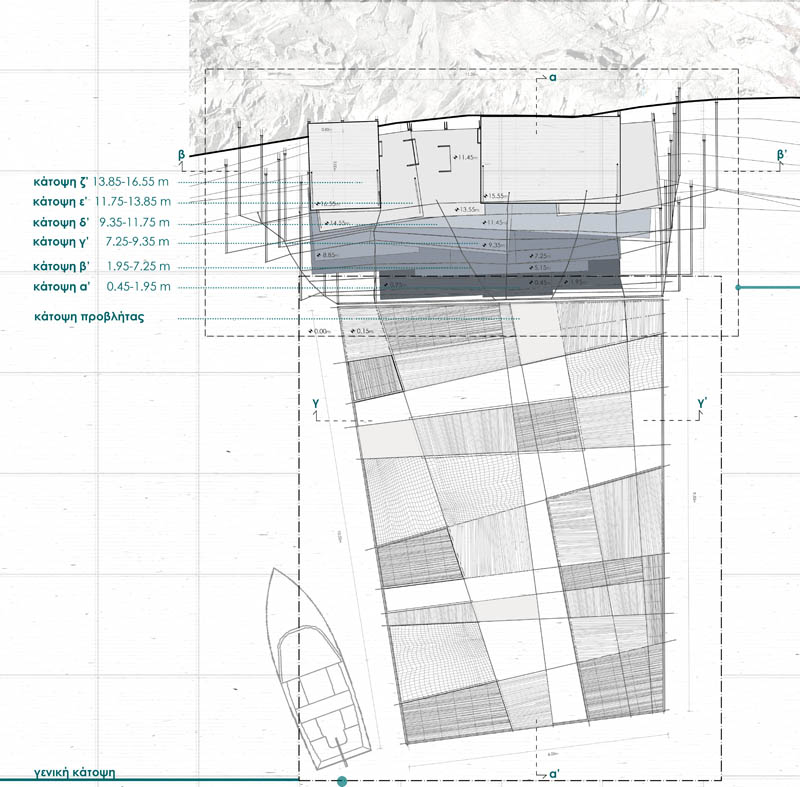

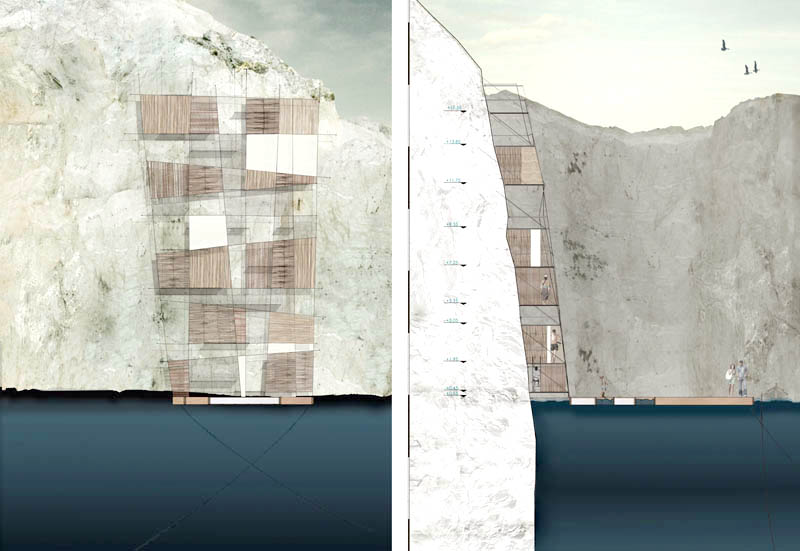

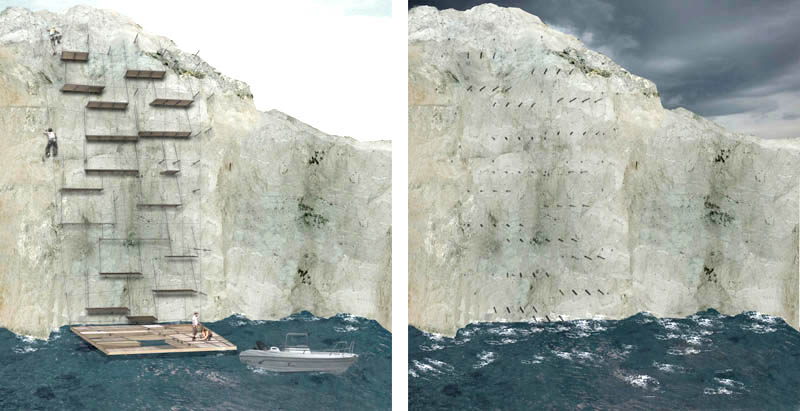

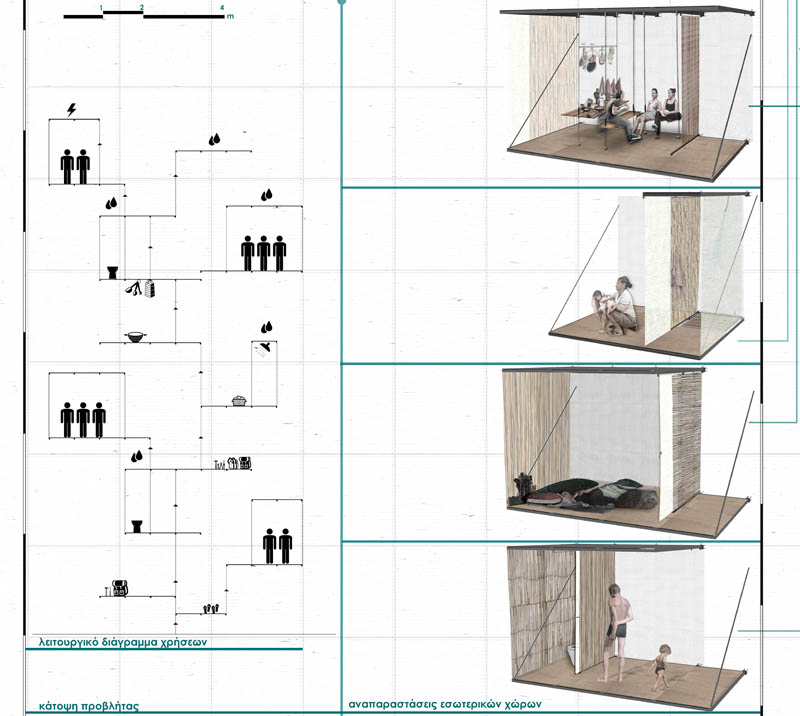

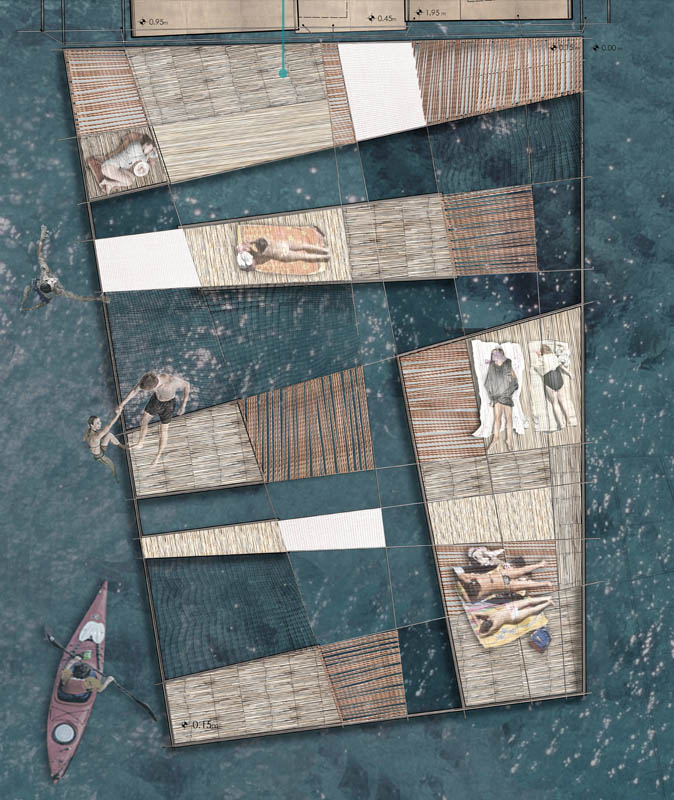

The subject of the thesis is the research of the landscape of rock islands in the Saronic gulf and our intervention in terms of creating a model to be adjusted on selected places. The Saronic gulf, constitutes a water entity with inaccessible “small spatial substances”. The character of the gulf has been formed by a combination of parameters. At first, the Saronic has a very important signification regarding the marine traffic due to its port Pireus, its industrial and port facilities and its close proximity to the city of Athens. We take into account these elements and we suggest an intervention which attempts the reevaluation of land by the reversion of gulf’s character and the redefinition of the meaning of tourism.
The structure of the thesis, is divided in three parts. It involves an extended mapping about the small geomorphologic configurations, the basic concept of our suggestion for the untouchable rock islands and the solution regarding the energetic issues. We use a variety of tools and methods for approaching the project (for example maps, photographs, models, plans and sketches). In this way, we catalogue and map the connection, the relation of autonomy or the dependence between the complexes of rock islands and between the complexes and the city.
By evaluating the characteristics of the forced semi permanence and the semi exclusion due to its rocky landscape and the sea as a natural obstacle, we propose the creation of circumstances of access and ephemeral habitation. The term of escape in infertile places of the “urban waters” of the gulf obtains a new substance.
By spotting the main characteristic that the most rock islands of the Saronic gulf share, which is the intense verticality on the unclear boundary between land and sea, we try to change the existing condition of inaccessibility and of non living. The whole concept is converted into a model in order to be readjusted to the net of rock islands that had been researched. This structure is described as an axial continuity that emerges from the sea and it climbs to the rock vertically.
These inaccessible sea rocks become real existances that revoke the model of tourist growth and are being offered as a proposal of coexistence between the unaffected nature and the human substance.
Supervisors: Gavrilou Evelyn, Paniyiris Costis
Reference Number: 496
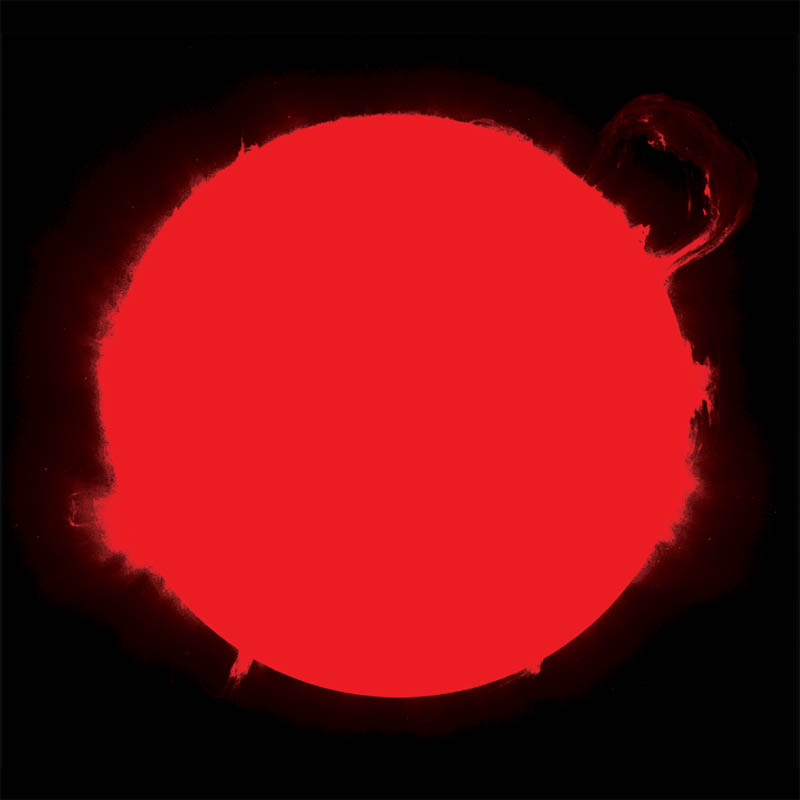





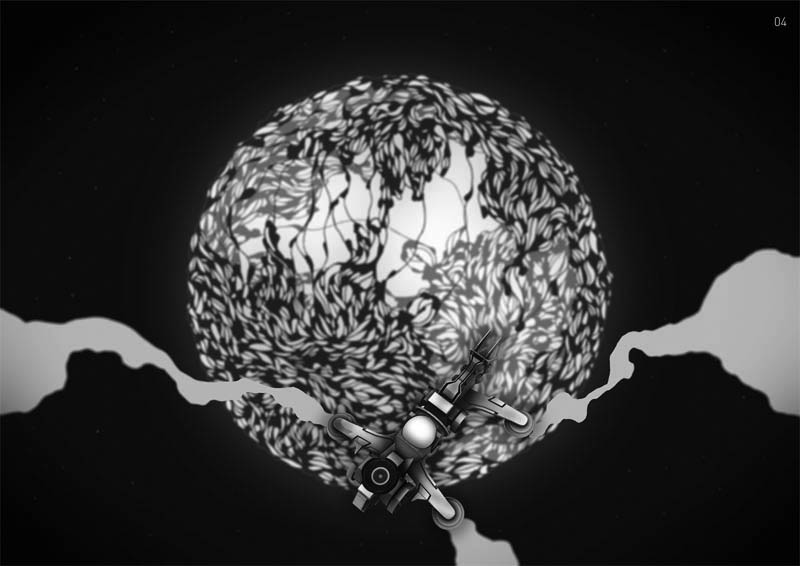

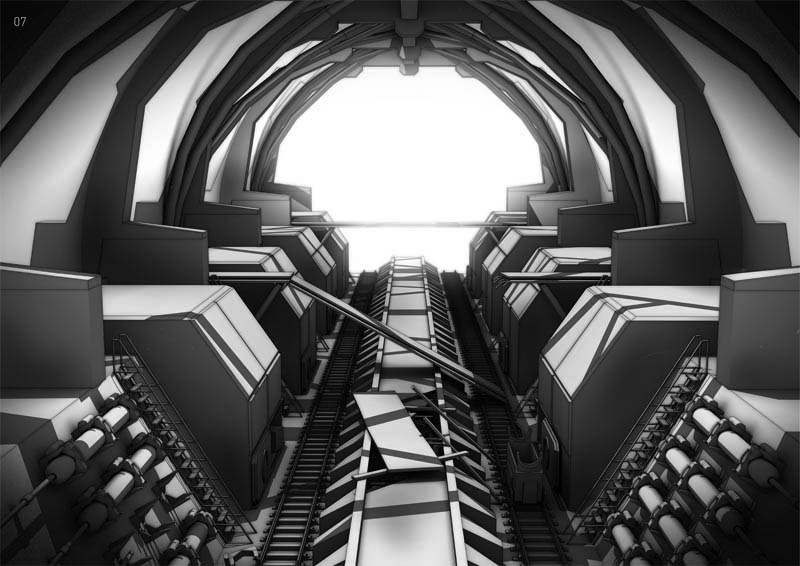

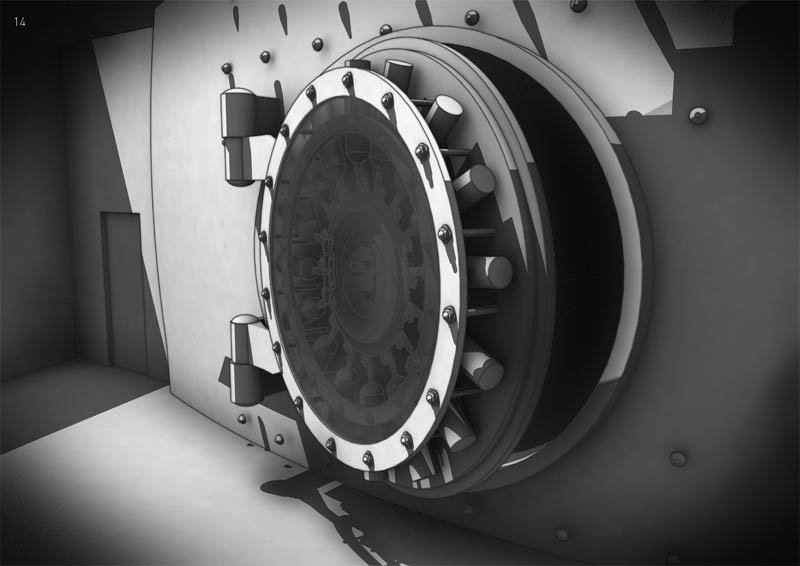

The current paper is referring to the science fiction book Solaris by Stanislaw Lem. The composition consists of the design of architectural elements and characters described in the book for the production of an animated film. S. Lem doesn’t seem to make much effort to expand the elements of scenography to the extent that they seem bizarre or over-developed in relation to the immediate reality. His interest seems to be focused on the existential quest of man in the world and this happens through his encounter with something that appears to be a higher consciousness than his own. The issue of transferring the text into the iconography of cinema is handled using influences collected from the immediate reality. This occurs through copying references from modern technological objects and appliances and reconstructing them in an environment that objects play their role not as symbols but as geometries that intensify the synthesis according to the actions described in the book. The main topic here is the atmosphere. Reading the text brought up an association to the noir movies (black and white image choice, and the use of filters such as vignette and film grain). The various elements of “scenography” are designed and placed, based on the direction of the camera, facing facts that promote the story. There is no emphasis on the actual book’s descriptions as much as in inventing them again in relation to the intensities of the script and the case of action with absence ofthe narrative’s time frame.
Supervisor: Psychoulis Alexandros
Reference Number: 485


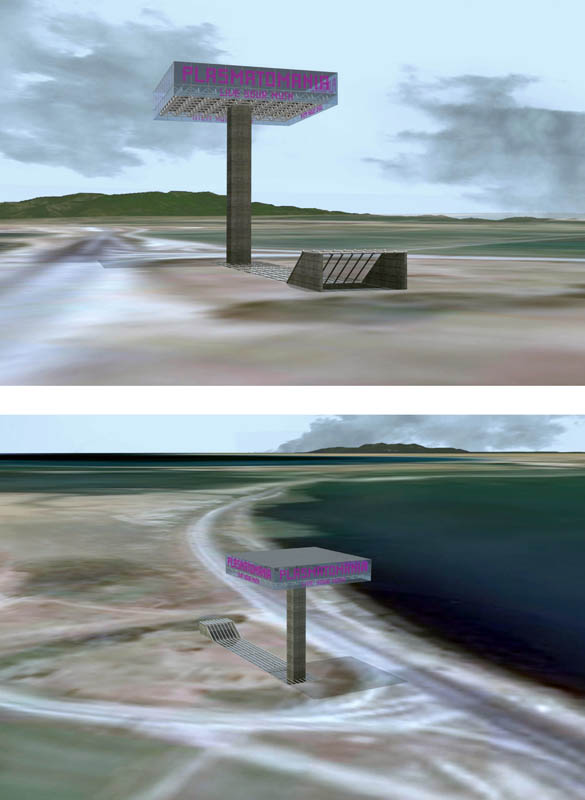

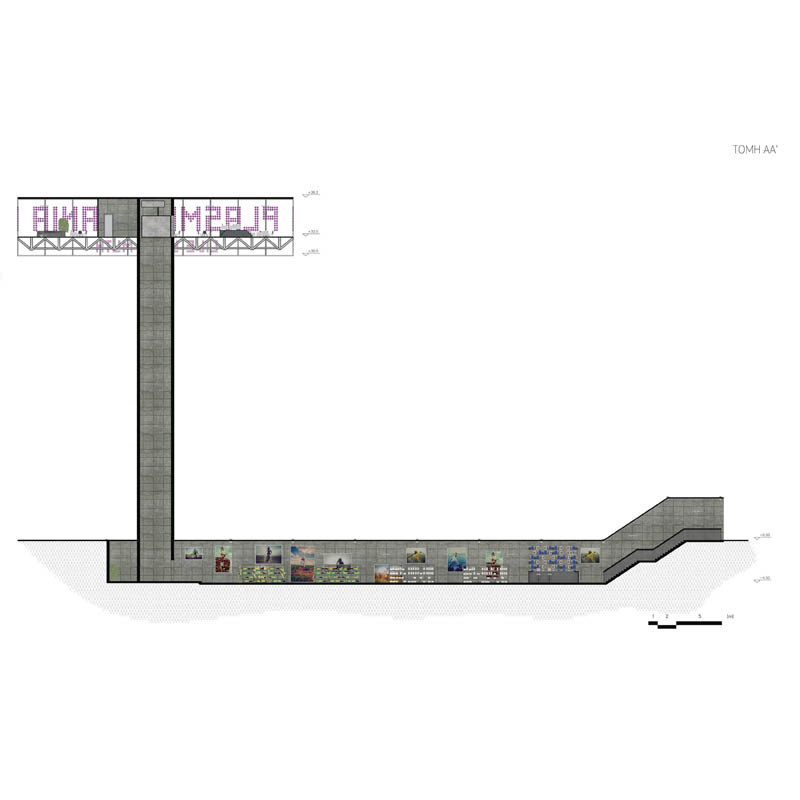

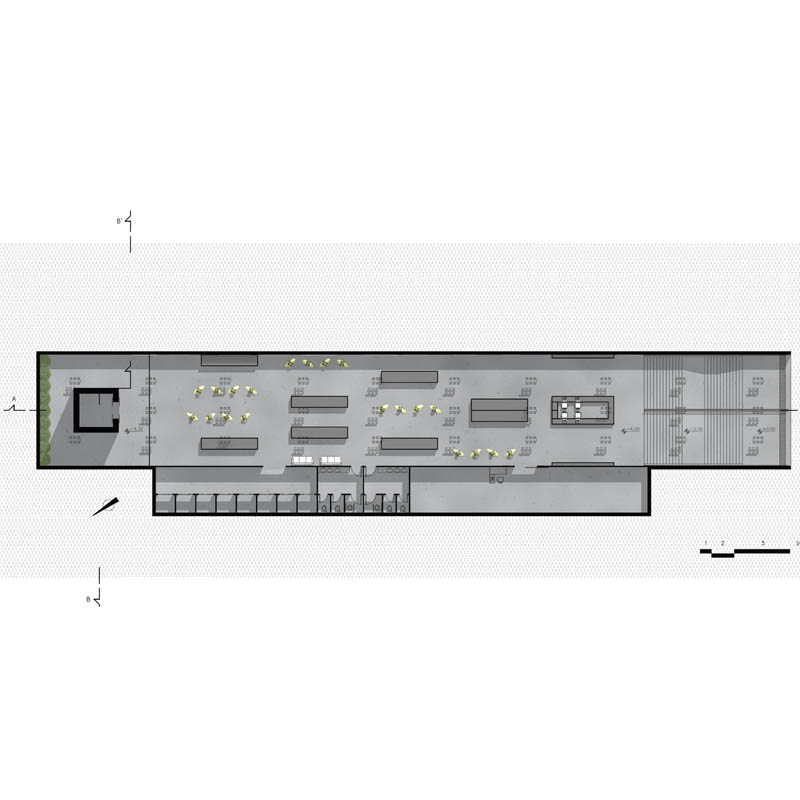





This thesis is based on our special research topic “Test Site Koyrsoymloy - the levels of lead” [2014], which refers to a particular area at the coastline of Rodhopi region, Thrace [peninsula Molivoti]. The research of our interaction with the landscape led us to the invention of an action transmitter, a protagonist. It was called Plasma and got indulged in a game with the matter of the place. Plasma is what we decided to proceed with in this project, developing a wider scale scenario.
In this case, Plasma is related to an organism that might have lived [or still lives] in the area - coastline of Rodhopi and Xanthi region. It reincarnates in Homo Plumbatus - simultaneously, an official and unofficial endemic species. Its existence and behavior constitute the most commercial myth of the area. We document and manage this myth.
Having already examined the implementation of the concept Minority in the landscape during our previous project, we move oppositely. The kindness of the ecosystem is still not enough to classify it as a popular destination. The answer lies in the concept of Fantasy. The coherences are both, scientific and touristic.
A whole promotion campaign is created to establish the lakes and lagoons of Thrace as the ultimate chance to incarnate a mythic creature. Whoever attempts this incarnation, is now called Plasma. A whole culture is evolving into fashion, and vice versa - this fashion becomes the new culture of the area. Given that fashion is connected inextricably to imitation, Plasma grows to Rodhopi’s new Brand Name. Even our proposal - ''Plasmatomania'' center [Vistonida lake] - aims at a deliberate imitation of other famous view spots.
A greedy Plasmatomania. By constant exaggeration we attempt to criticize commercialization, naderism, vacation, fashion - the modern man. We accept the human impact on nature, taking into account the anthropocene approach. Nevertheless, the subject of this research regards a non-human species, since we constantly question human being as the center of the world.
Supervisors: Tzirtzilakis Yorgos, Psychoulis Alexandros
Reference Number: 529

